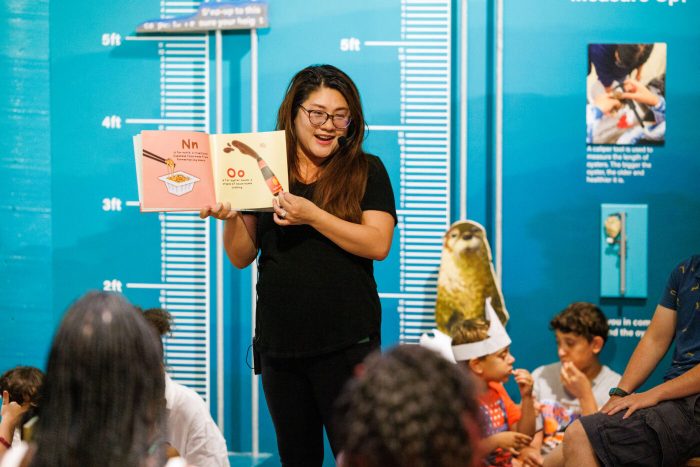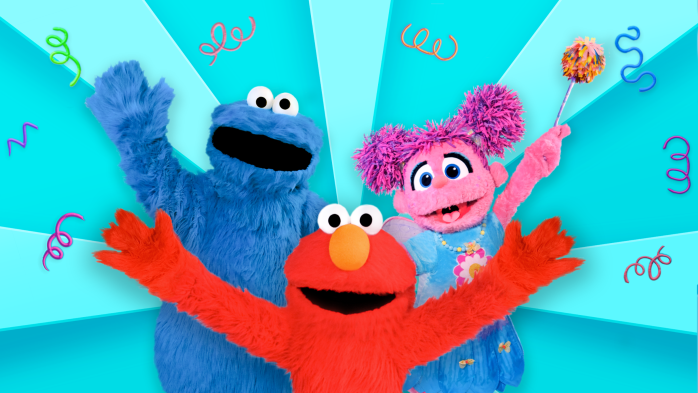Jane and Drew Tamassia love going to the dentist. They think it is fun. Perhaps it’s words like “tickle toothbrush” and “sugar bug remover” that make these preschoolers giggle. Maybe it’s the mini-movie theater or Downtown Disney decorations that draw them in.
“I think they like going because I started them early and chose someone who knows how to work with children,” says Suzanne Tamassia, whose own childhood dental fears drove her to find a dentist who works specifically with children.
“Getting children in at an early age is key,” says pediatric dentist Lawrence Louie. “I like to see them when the first tooth erupts. It gives me a chance to get a good look at the child’s mouth and lets me share oral health care and nutrition information with the parents.”
Jennifer Luzader, pediatric dental hygienist, agrees.
“We recommend children have their first dental exam by their first birthday, and their first dental cleaning by age 2.”
Even before that first appointment, there are things parents can do to prepare their child for their visit.
“Use books, videos, and role play at home,” says Luzader. “Talk with your child using good, positive terms, and remind him how important it is to take care of his teeth and eat the right kinds of foods.”
That is what Susan Magasiny did.
“Before Jake’s first appointment, we talked about how the dentist was a doctor for his teeth and that to keep them healthy, he needed to have check ups,” says the mother of two. “I told him the dentist was going to look at his teeth, count them, and maybe take a picture. It was no big deal.”
“I remember sitting at home [and] role-playing with Jane,” recalls Tamassia. “I would say, ‘Open your mouth, and let me see your teeth,’ then I would pretend to be the dentist. She liked that.”
Role-playing did prepare Jane for that first visit, because when she went, she knew just what to expect.
“When a child comes in, we try to make it a fun experience,” say Luzader. “They get to pick out things like fluoride flavor, sunglasses for eye protection, and a new toothbrush and floss. Then we go through each step of what we are going to do, first on their fingers, then in their mouths. We count their teeth, scale those that are covered with plaque and tartar, and then polish. We finish with a fluoride treatment and have the dentist come in for an exam.”
Louie talks children through the procedures, too.
“We call it, ‘Tell. Show. Do.’ First we tell them what we are going to do, show them on our hands, then do it — that way there are no surprises.”
Even without so-called “surprises,” sometimes anxiety sets in.
“Crying through the first two years is very expected, even at 3,” says Luzader. “One way to ward off tears is with distraction. We have puppets we use and will talk with children on their level to gain their confidence. We also try to make it fun — ‘What kind of animal is down your throat today?’ Even when children come in crying, 95 percent of them leave with a smile.”
“What is really important is that parents not relay any fears they have about going to the dentist,” says Louie. “Every once in a while, I see where parents have elaborated on what happened to them, and it comes through to the children.”
On occasion, dental emergencies arise which cannot be avoided.
“One week after Jake’s first appointment, he fell into a picnic table and had a severe dental injury. His gum was pushed up to the top of his mouth and his whole front tooth was exposed,” recalls Magasiny. “I called the dentist and they took us in right away.”
But it was a wait-and-see injury. In the months to follow, Jake had to return several times so the dentist could evaluate the situation.
“I started to prep him about losing his tooth early, which he did about six months later,” she continues. “But through it all, Jake built trust and confidence in the dentist.”
So much so, if you asked him today, he would tell you he looks forward to his dental visits. His mother does, too.
“What I appreciate most about our dental practice is that they have given me tools to teach my children preventative dentistry,” says Magasiny.
Tamassia agrees.
“I like how our dentist takes a sincere interest in children,” she says. “Everything is catered to them — there’s an indoor climbing playhouse, video room, and lots of books. They even get to take home a goodie bag and report card!”
“The goal is to have the child enjoy his first, second, third — whatever visit it is,” says Luzader. “Because if he does, he’ll want to return again and again.”
Denise Yearian is the former editor of two parenting magazines and the mother of three children and four grandchildren.
10 tips to prepare for the first dental visit
Here are some suggestions from the American Academy of Pediatric Dentistry:
1. Start early to get your child acclimated to visiting the dentist and prevent future dental problems.
2. Consider a “get acquainted” visit to introduce your child to the dental office before the first appointment.
3. Choose a pediatric dental practice. Pediatric dentists have two to three years of specialized training beyond dental school in treating children. Plus, the offices are child friendly.
4. Select an appointment time when your child is alert and rested.
5. Explain before the visit that the dentist is a friend and will help your child keep his teeth healthy. Add that the visits will be fun.
6. Answer all your child’s questions positively. (Keep an ear out for scary stories from peers and siblings.)
7. Avoid using scary words. Check-ups and 90 percent of first visits do not have anything to do with “hurt,” so do not even use the word.
8. Read your child a story about a character that had a good dental visit.
9. Write out questions in advance about your child’s dental health on such topics as home care, injury prevention, diet and snacking, fluoride, and tooth development.
10. Make sure your child has regularly scheduled dental visits twice a year to maintain good dental health.
Questions to ask when choosing a dentist
Here’s what the Academy has to say:
Before the visit:
• Do you have special training or interest in treating children?
• Are you a member of the American Dental Association or the American Academy of Pediatric Dentistry?
• Is the dental office set up for children? Does it offer toys, books, games, and/or child-sized furniture?
• How does your office deal with dental emergencies?
• Is the office conveniently located to your home or your child’s school?
• Does the practice accept dental benefit plans?
After the visit:
• Was my child seen promptly?
• Was I asked for a complete medical and dental history of my child?
• Was the dentist gentle but thorough when examining my child’s mouth?
• Did the dentist or staff talk with my child, encouraging his involvement in dental health?
• Was I informed about my child’s tooth development, the causes and prevention of dental disease, and appropriate dental care at home?
• Were my questions treated with concern and respect?
• Was the visit a positive experience for my child?
Resources to prepare children for visits with the dentist
• “Barney Goes to the Dentist” by Linda Cress Dowdy; Publishing Lyrick
• “The Berenstain Bears Visit the Dentist” by Stan & Jan Berenstain; Random House
• “Brush Your Teeth Please Pop-Up” by Leslie McGuire; Reader’s Digest
• “Curious George Goes to the Dentist” Margaret Rey; Houghton Mifflin
• “Doctor DeSoto” by William Steig; Farrar, Straus & Giroux
• “Going to the Dentist” by Fred Rogers; Putnam
• “Have You Ever Seen a Moose Brushing His Teeth?” by Jamie McClaine; Partners Publishing Group
• “How Many Teeth?” By Paul Showers; HarperCollins Publishing
• “Just Going to the Dentist” by Mercer Mayer; Golden Books
• “Show Me Your Smile!: A Visit to the Dentist (Dora the Explorer)” by Christine Ricci; Simon Spotlight/Nick Jr.
• “ ‘Smile’ Says the Crocodile” by Jane Belk Moncure; Child’s World
• “The Tooth Book” (Bright & Early Board Books) by Dr. Seuss; Random House
• “A Trip to the Dentist Can Be Lots of Fun!” (Videorecording) by Robert Wortzel and Rob Garner; Night Media Group, Inc.
• “A Trip to the Dentist Through Pinatta’s View” (Videorecording); Boggle-Goggle Enterprises
• “What to Expect When You Go to the Dentist” (What to Expect Kids) by Heidi Murkoff; Harper Festival
Frequently asked questions about visiting the dentist
When should my child first see a dentist? At the eruption of the first tooth and no later than his first birthday.
How often does my child need to go? Every six months.
When should I first clean my child’s teeth and what should I use? Clean your child’s gums right from the start. Use a soft-bristled toothbrush with a small head and water, at least once a day before bedtime.
When can I begin using toothpaste? Fluoridated toothpaste should be introduced when your child is between the ages of 2 to 3.
How do I know if my child is getting enough fluoride? Ask your dentist to evaluate your primary source of drinking water. If the fluoride level is deficient, he may prescribe fluoride supplements.
What can be done to alleviate pain during teething? Give your child a clean teething ring; cold spoon; or cold, wet washcloth. Or rub his gums with a clean finger.
When should a child stop bottle feeding? Between 12 to 14 months of age.
What is baby bottle tooth decay, and how can I prevent it? Baby bottle tooth decay is caused by nursing a child to sleep or putting him to bed with anything other than water. To prevent it, have your child drink from a cup by his first birthday. Do not let him fall asleep with a bottle. Night-time breastfeeding should be avoided after the first primary teeth erupt. Drink juice from a cup instead of a bottle.
When should my child stop sucking his thumb or fingers? Most children stop by age 2. If your child is still sucking his thumb after age 4, discourage it and talk with your dentist or pediatrician. Prolonged thumb sucking can create crowded and crooked teeth, or bite problems.
What should I do if my child has a toothache? Rinse the irritated area with warm salt water and place a cold compress on his face if it is swollen. Give your child pain reliever for pain. See a dentist as soon as possible.
— the American Academy of
Pediatric Dentistry





















